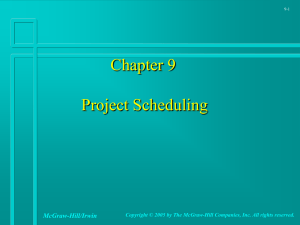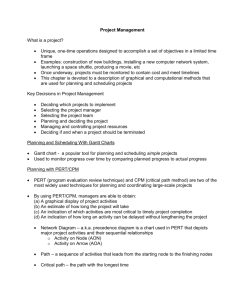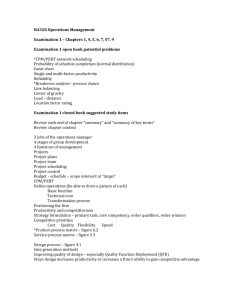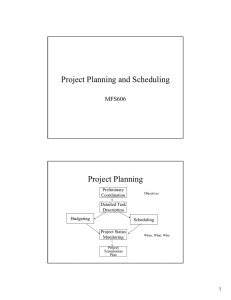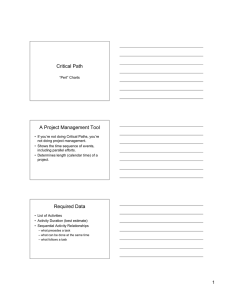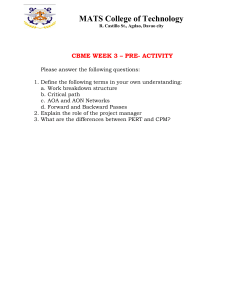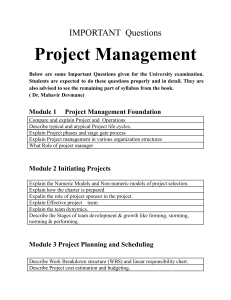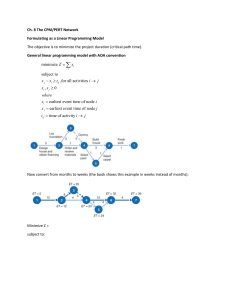CBA 390 CBA 390 Chapter 3 outline – Project Management
advertisement
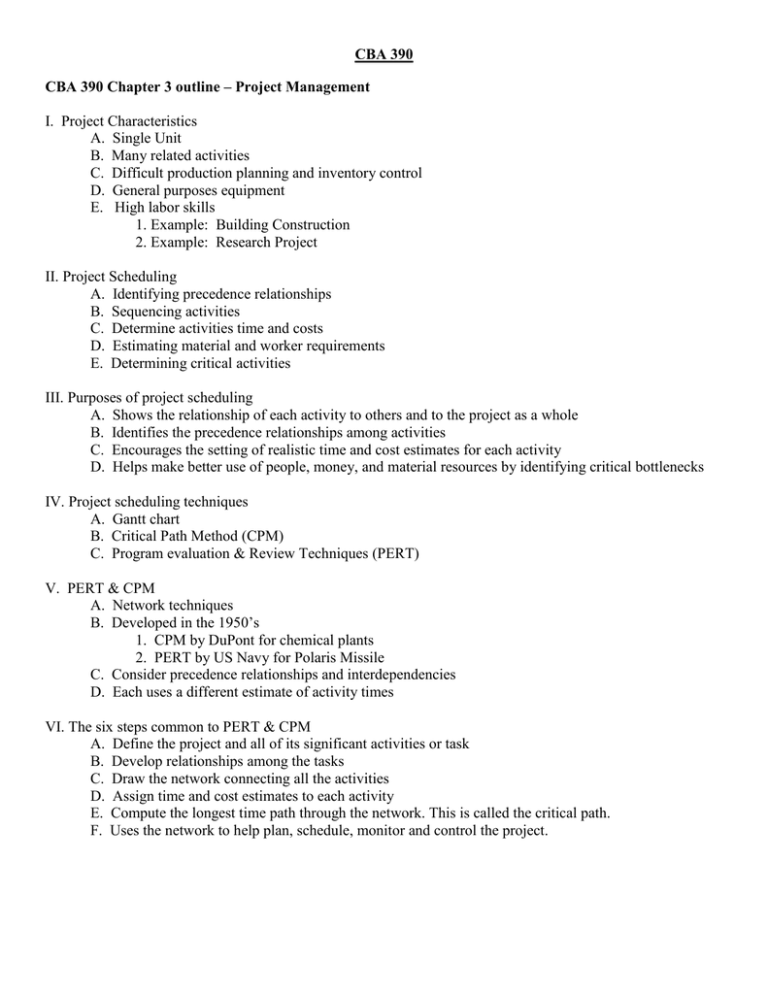
CBA 390 CBA 390 Chapter 3 outline – Project Management I. Project Characteristics A. Single Unit B. Many related activities C. Difficult production planning and inventory control D. General purposes equipment E. High labor skills 1. Example: Building Construction 2. Example: Research Project II. Project Scheduling A. Identifying precedence relationships B. Sequencing activities C. Determine activities time and costs D. Estimating material and worker requirements E. Determining critical activities III. Purposes of project scheduling A. Shows the relationship of each activity to others and to the project as a whole B. Identifies the precedence relationships among activities C. Encourages the setting of realistic time and cost estimates for each activity D. Helps make better use of people, money, and material resources by identifying critical bottlenecks IV. Project scheduling techniques A. Gantt chart B. Critical Path Method (CPM) C. Program evaluation & Review Techniques (PERT) V. PERT & CPM A. Network techniques B. Developed in the 1950’s 1. CPM by DuPont for chemical plants 2. PERT by US Navy for Polaris Missile C. Consider precedence relationships and interdependencies D. Each uses a different estimate of activity times VI. The six steps common to PERT & CPM A. Define the project and all of its significant activities or task B. Develop relationships among the tasks C. Draw the network connecting all the activities D. Assign time and cost estimates to each activity E. Compute the longest time path through the network. This is called the critical path. F. Uses the network to help plan, schedule, monitor and control the project. VII. PERT activity times A. 3 time estimates 1. Optimistic time (a) 2. Most-likely time (m) 3. Pessimistic time (b) - Expected time: t = (a + 4m + b) 6 - Variance: σ2 = b-a 2 6 VIII. Critical Path Analysis A. Provides activity information 1. Earliest (ES) & latest (LS) start 2. Earliest (LF) & latest (LF) finish 3. Slack (S): Allowable delay B. Identifies critical path
